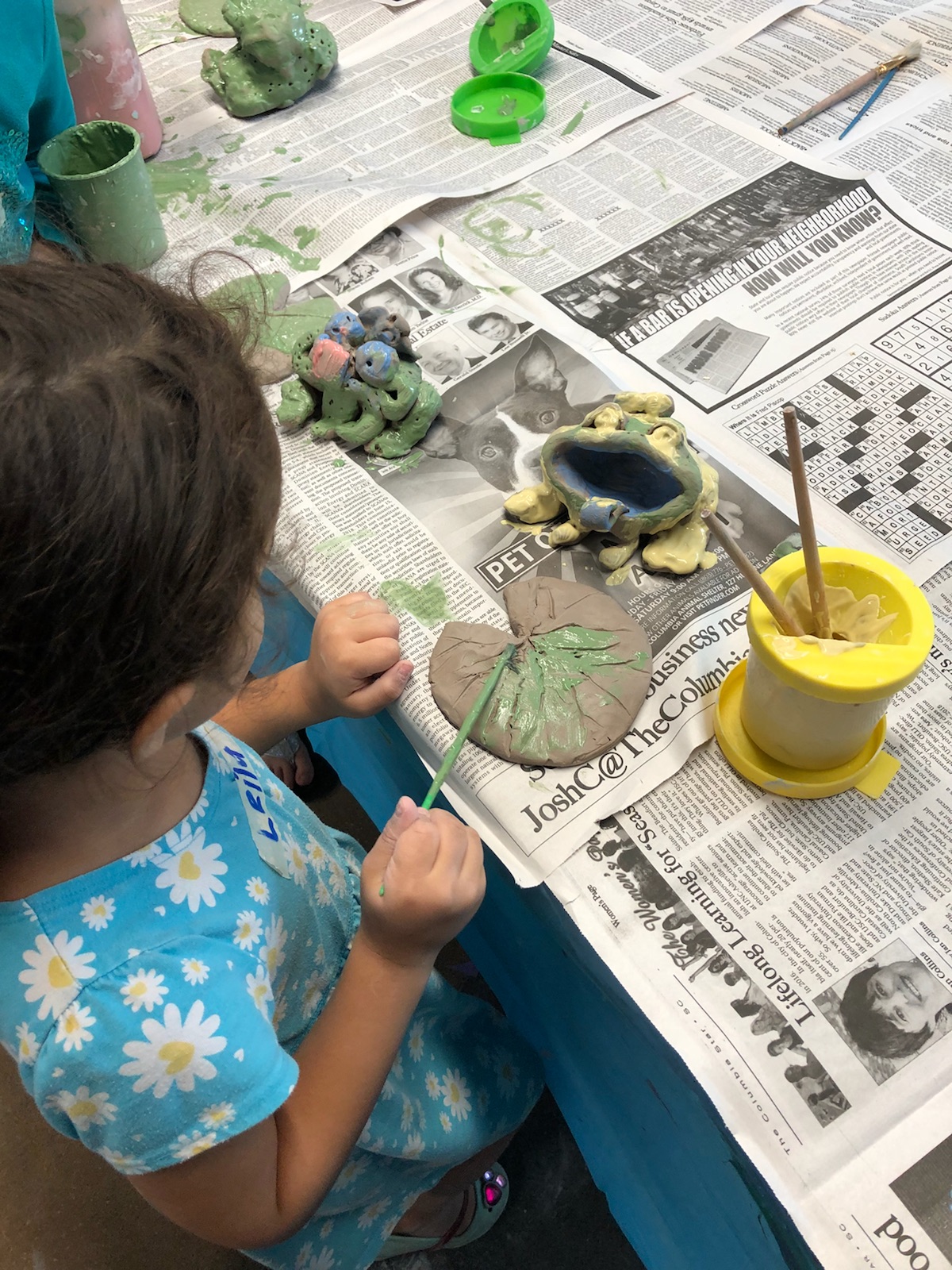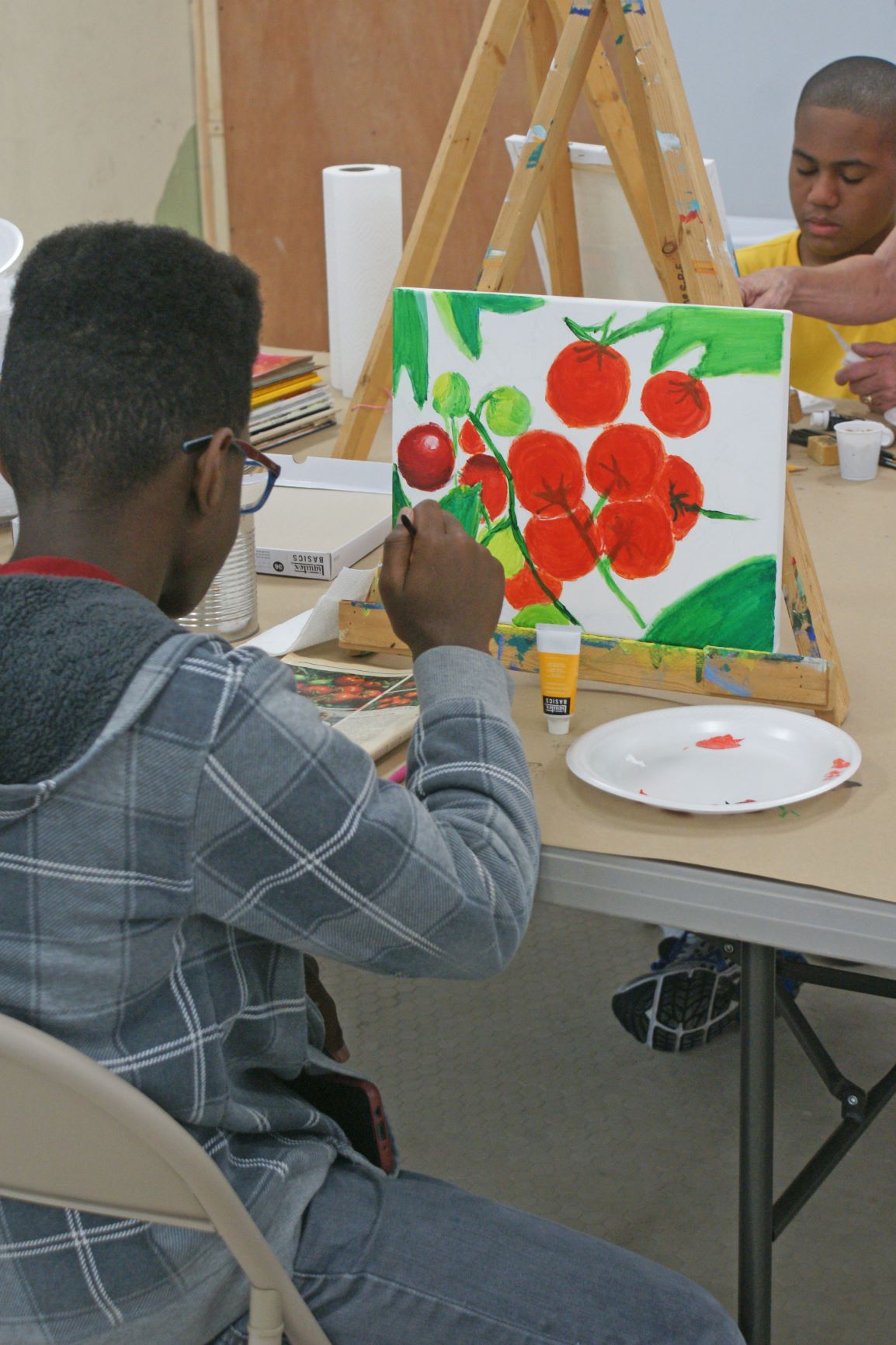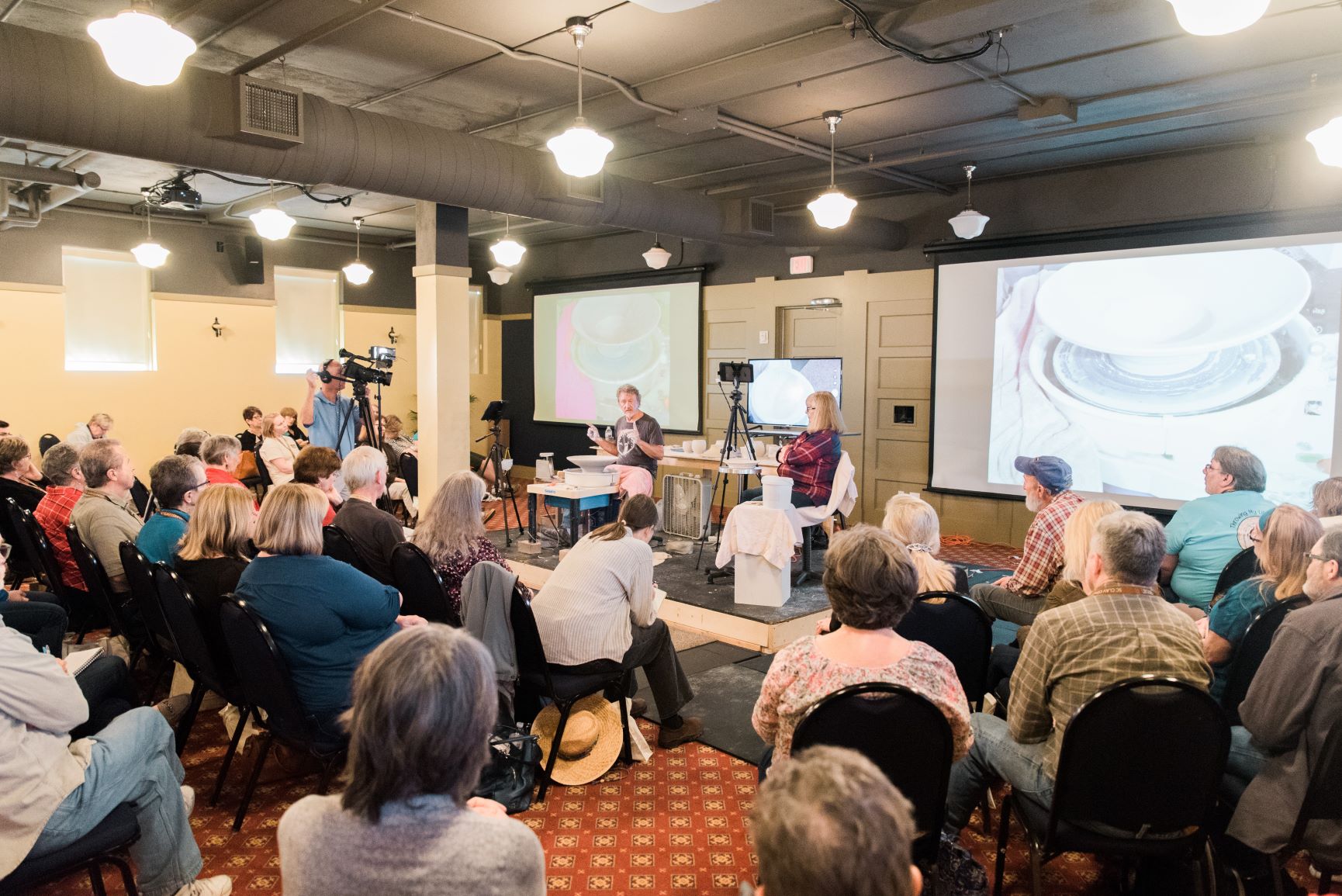On any given day at the Columbia Art Center, experienced artists may be creating ceramic masterpieces in a vibrant open studio, children and adults may be in painting class, or students of crocheting, basket weaving or jewelry making may be hard at work.

The City of Columbia arts center offers multiple classes throughout the day
and evening, teaching children and adults many types of the arts. Photo: City of Columbia.
It's all happening at the downtown center, operated by the city's department of parks and recreation as a way to make art accessible and enjoyable for Columbia's residents.
But it's not just the state capital that is connecting residents with their artistic sides. Smaller cities are doing it, too.
In the Town of Clover, Gallery 120 displays the works of both established and emerging student artists in its gallery in the Clover Community Center. The town also holds art workshops and summer camps.
In the City of Newbery, the arts center opened in the historic Newberry Hotel on Main Street in 2014 to offer visual arts programming for all ages and levels of experience. There are classes in pottery techniques, watercolors, oil and acrylic painting, along with painting and pottery parties for children and adults.

The Newberry Arts Center has offered visual arts programming
for all ages and levels of experience since 2013. Photo: City of Newberry.
Marquerite Palmer, a potter and the arts and special programs coordinator for the City of Newberry, says she dreamed of an arts center in Newberry for 28 years but kept running into obstacles.
That changed in 2013, when she was working part time with the city's parks, recreation and tourism department and pitched the idea about creating an arts center.
"We offered so much in sports. We needed to offer something in the arts. When I was younger, I didn't like school. I was not good at sports, but I found I could learn through the arts," Palmer said.
So she wrote a proposal for the city to start small with a watercolor class and a summer camp in 2014. The center took off, and has grown to offer classes for children, teens and adults, along with camps and potting and painting parties, offering quality arts experiences and increasing support for working artists.
The center has its own budget through the city's parks, recreation and tourism office. It also charges fees for classes and camps. Plus, Palmer said classes at the center, along with events such as the annual SC Clay Conference that was started by the organization, bring in visitors and offers a boost to the city's economy.

The City of Newberry hosts the South Carolina Clay Conference to
bring in visitors and boost the city's economy through the arts. Photo: City of Newberry.
"Art brings people to your town. They come from Columbia, from Greenwood, from Camden," said Palmer. "We are here to serve the community, and we are always looking for what we can do to reach everyone. We've gotten a lot of people involved, and we've been pleased with how the city and the community have responded."
Keeping the whole community in mind
In Columbia, the 5,000-square-foot art center opened in the lower level of a parking garage after outgrowing its previous location.
The new facility features open studio areas, where potters work the wheels. It also offers multiple classes throughout the day and evening, teaching children and adults many varieties of the arts. A six-week pottery class is $90, while workshops cost $20 – $100, depending on whether the instructor provides materials.
For Brenda Oliver, cultural arts program coordinator with the City of Columbia, another main facet of the arts center is its outreach programming. That includes access to programs such as Creative Journey, an art rehabilitation program that works with the Wounded Warrior Transition Unit at Fort Jackson. The center also partners with the Transitions Homeless Center, offering pottery and sewing classes for youth, and collaborates with Lutheran Family Services to help its refugee resettlement populations.
"It's important as a community and municipal organization that we be part of the community around us. That includes the international community, the military community, the veterans," said Oliver.
Columbia's center also teaches classes on how to crochet sleeping mats out of plastic yarn (or "plarn") to be used by the area's homeless population. The center's partners, through a program known as Operation Bedroll, distributed 175 of those mats to the homeless in 2017, Oliver said.
"So in addition to all of the classes and a vigorous open studio, we have external outreach," said Oliver. "By working with different populations, it shows we are interested in the community as a whole and not just certain segments."
The open studio has 106 members and many more on the waiting list.
Expanded offerings, growing demand
Oliver has been with the Columbia Art Center for eight years, during which time she has seen it grow from a small pottery studio with about 35 members. The center has expanded its pottery area and also ventured into all sorts of arts, and she's always reassessing and thinking about possible new offerings.
For example, as part of Columbia's First Thursdays on Main, the Columbia Art Center holds a family-friendly event that highlights visual or performing arts from another country. The response to one of those events has led to a workshop on art techniques from India.
She suggests other towns looking at offering art classes should investigate what local residents are interested in and also understand the importance of partnering with other agencies and outreach groups.
"We're always making an effort to broaden our scope," Oliver said. "We partner with local art guilds and nonprofits. Look at forming partnerships, especially if you're in a small town. Also, be sure to look if there is a university or a college near you. That's a way to get the talent you need to teach the classes."
Amy Gonzalez, the special events coordinator in the Town of Clover, said the idea to open an art gallery in the town's community center came from a resident who worked in the art industry.


In the Town of Clover, Gallery 120 displays the works of both established and
emerging student artists in its gallery in the Clover Community Center. Photos: Town of Clover.
"This community gallery has a mission to build a strong, vibrant arts community in Clover. And we want to offer a venue for artists to come in and exhibit in Clover," Gonzalez says.
Gonzalez says the art gallery, Gallery 120, is funded through the town's general fund. It does charge for summer camps and some workshops, with all funds going to the cost of operating the gallery.
She said the gallery is not fully equipped to conduct art workshops, so it collaborates with Clover High School and uses the school's art room, which has the necessary space and tools to accommodate classes.
The exhibits at Gallery 120 change each month and include a student wall where young artists can show their work.
"People walk in, and they are shocked," Gonzalez said. "It's nothing elaborate, but to have beautiful pieces of artwork decorating the community center — it makes an impression."
That encouragement of the arts is key, she said, since studies show participation in visual and performing arts by students helps improve critical thinking skills as well as test scores. The center also offers summer arts camps and workshops.
"To see these kids come alive, it really gives them that stage to perform on — whether that's a canvas or a stage. It brings them alive," Gonzalez said. "And it brings the community together as well."
